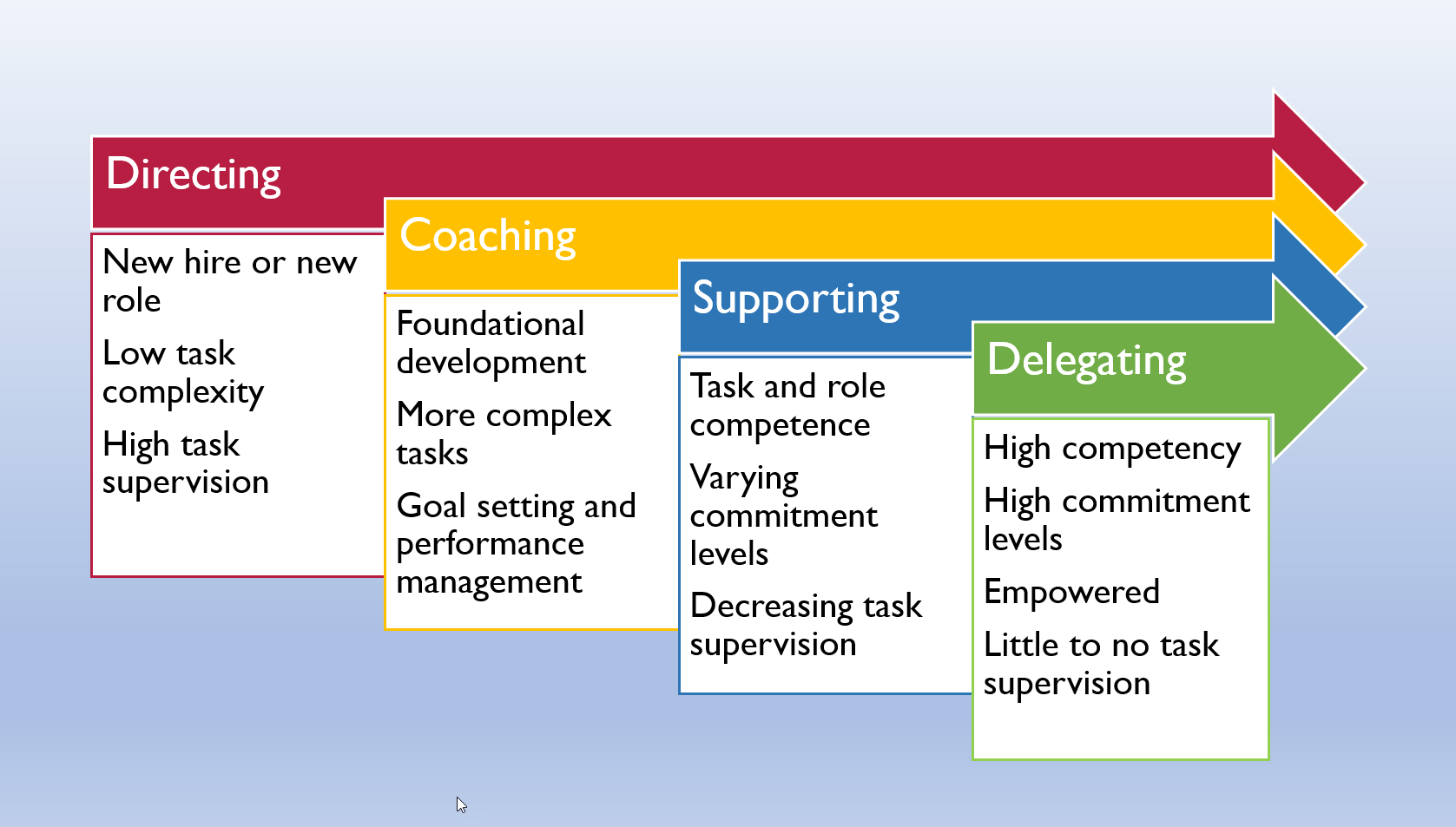Blog Posts
 October 15, 2025Badly Leading Leaders
October 15, 2025Badly Leading LeadersBy Dr. Scott.
In this final installment in our current series on bad leadership, we’ll broaden our scope beyond Leaders Leading Badly and When Leaders Lead Badly to focus on ways that even good leaders can sometimes ineffectively mentor and guide the individuals in the leadership funnel.
If you’ve been reading along with me, you know that I place succession planning and preparing the next generation of leadership at the top of my list relating to operational leadership best practices. I’ve even highlighted the importance of these topics in separate pieces. See, for example, my series on succession planning: Leadership Potential, Implementing the Succession Plan, Monitoring Succession Plan Implementation, and Emergency Succession Planning.
This week, we examine three pitfalls for leaders who find themselves badly leading the future leaders of their organizations. Specifically, we’ll look at how ineffective leaders tend to undermine their subordinates, perpetuate and normalize bad leadership practices, and often turn a blind eye to the needs of their followers and the organization as a whole.
Failure to Launch
For many of us, learning to delegate is one of the hardest leadership skills to master. Lauren Landry, writing for the Harvard Business School, noted in How to Delegate Effectively: 9 Tips for Managers that leaders often have various reasons to “shy away from delegating work.” Reasons included in Landry’s list ranged from time sensitivity and worrying that delegating the task will take longer to simply not trusting that a subordinate can complete the task effectively.
These leadership pitfalls keep us from realizing the many benefits of effective delegation which include increased morale and trust, advanced problem solving and innovation, clearer leadership training pathways, and greater leadership authority and overall impact. Instead, when we fail to delegate or refuse input from subordinates, we erode trust, stifle innovation, and undermine mentorship and leadership training opportunities. In effect, as leaders, we promote a culture where failure to launch for the next generation of leadership is almost predetermined.
To overcome these hurdles, Landry recommended various strategies including learning to recognize when and why delegation is important, playing to the strengths and weaknesses of team members, defining desired outcomes, establishing clear communication channels, and allowing for failure. As the old saying goes, “we learn more from failure than from success.”
Culture Shock
When we think of the term culture shock, our minds typically turn to traveling, cross-cultural exchanges and negotiations, or maybe to expatriates living abroad. What we mean here, though, is when leaders perpetuate negative cultures, normalize bad leadership, and demonstrate toxic behaviors that are then learned by and transferred to the next generation of leadership. These learned behaviors become a downward spiral and the resulting, often toxic organizational cultures become incredibly resilient to corrective actions. In these situations, even the most effective leaders and followers can experience an organizational culture shock that leaves them with only two choices: become part of or at least tolerate the toxic leadership culture themselves or seek employment elsewhere.
To break the cycle, leaders need to lead by example and demonstrate sound and effective leadership. More often than not, leaders in these situations should employ either a Situational Leadership Style, a Visionary Leadership Style, or perhaps even a combination of both styles. For more on leadership styles, see Thinking About Leadership: Leadership Styles. You also might want to check out Visionary Leaders and the Situation for some strategies for combining the two leadership styles.
Leaders attempting to break the cycle of bad leadership and organizational culture shock should also emphasize organizational and values, should lead with empathy and active listening, and should delegate and empower subordinates and team members.
Leadership Blinders
Like the fate of most organizational succession plans in general, especially when talking about small and medium sized enterprises, mentoring the next generation of leadership tends to be the plan, but with little to no follow through. As leaders seeking to meet annual goals, benchmarks, and targets across the different levels of operational functions, mentoring and individual leadership development can often get forgotten in lieu of growth metrics, operational efficiency KPIs, customer relations benchmarks, new product and service development and launches, etc. With all these operational demands, leaders can sometimes forget or even turn a blind eye to leadership training and development.
These leadership blinders keep us from focusing on organizational health or from seeing the inadequacies of the current leadership training and development efforts in the organization. Leadership blinders can also keep us from recognizing how our own ineffective leadership might be leading to employee burnout, office politics and conflict, or low morale and high turnover rates. In the end, these leadership blinders eventually undermine any achievements realized in those other operational areas.
To take off the blinders, leaders should begin by focusing on themselves first and seek to improve in the areas of emotional intelligence, the Situational Leadership Style, and active listening. Professional development training like those offered here through our Madison School of Professional Development or signing up for Madison Education Group’s executive and life coaching services are also recommended. Finally, leaders should incorporate mentoring programs and succession plan implementation goals into the corporate goals and strategies for each operational year. By making succession planning measurable goals, leaders and organizations can stay on top of effectively preparing the next generation of leadership.
Final Thoughts
In this blog, we examined some of the negative impacts of leading future leaders badly. Each generation of leadership has a responsibility to ensure future leaders are prepared to meet future challenges. Unfortunately, other operational goals such as revenues, sales, customers relations, and marketing can sometimes distract leadership from the importance of investing time and energy into effective leadership pathways for tomorrow’s leaders.
We explored three common pitfalls that undermine leadership funnel efforts including struggling to delegate tasks and responsibilities, normalizing bad leadership by perpetuating toxic organizational cultures, and losing sight of mentoring and leadership training programs while focusing on operations and strategic goals. Throughout, I recommended Situational Leadership Style as a foundational best practice for implementing change in organizations where leadership is caught in a cycle of toxicity and of leading leaders badly.
Thank you for reading the Madison School of Professional Development Wednesday Leadership Blog where we highlight leadership best practices each week. Check out more from this blog and other blogs hosted by MEG here.
If you have a topic that you would like to see me pontificate on, drop me an email at info@meg-spd.com.
Dr. Scott Eidson is the Executive Vice President of the Madison School of Professional Development and holds doctoral degrees in both history and business. When not thinking about leadership, he’s usually thinking about surfing or old Volkswagens.
 October 16, 2025MEG Leadership Blog Celebrates One Year Anniversary
October 16, 2025MEG Leadership Blog Celebrates One Year Anniversary October 22, 2025October 2024-2025: Year in Review
October 22, 2025October 2024-2025: Year in Review November 05, 20256 Characteristics of Situational Leaders
November 05, 20256 Characteristics of Situational Leaders November 10, 2025MCA Announces 2025 Scholarship Offer
November 10, 2025MCA Announces 2025 Scholarship Offer November 13, 2025The Situational Leadership Model
November 13, 2025The Situational Leadership Model